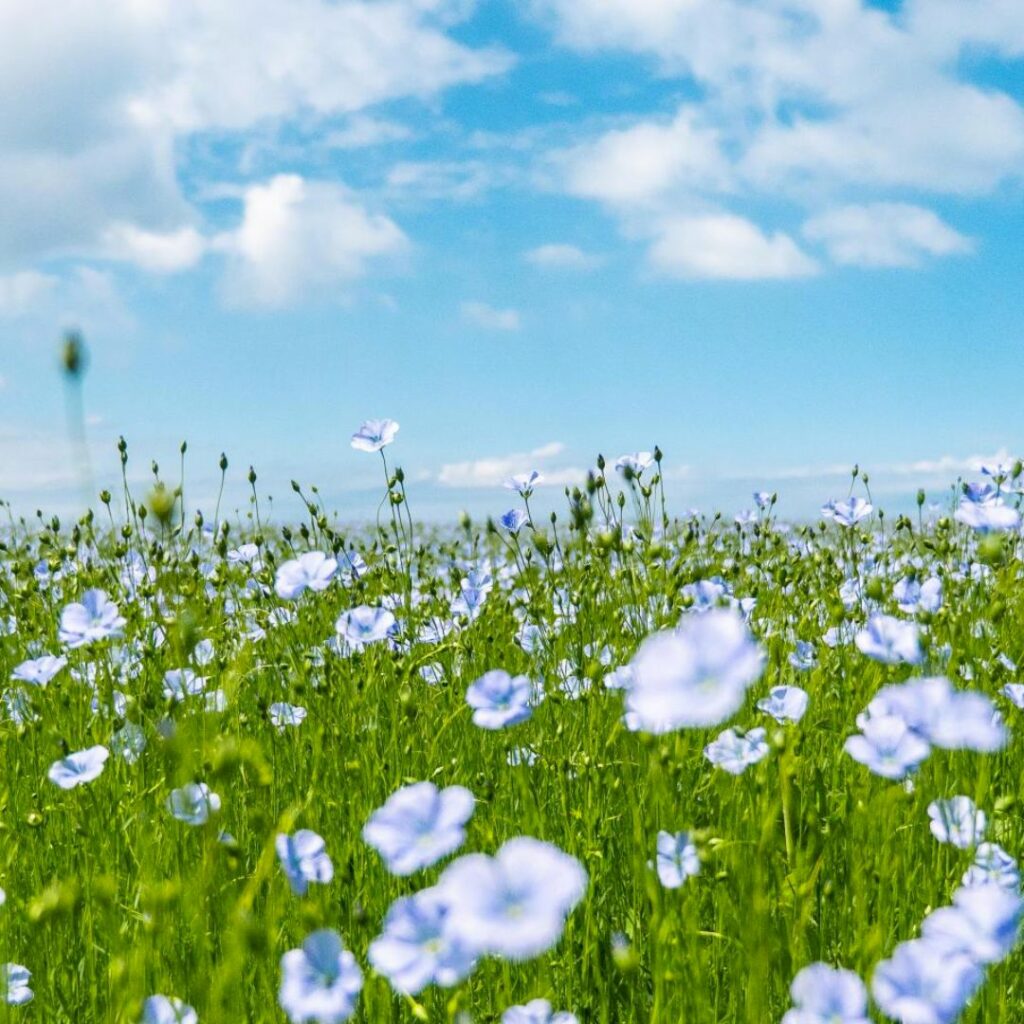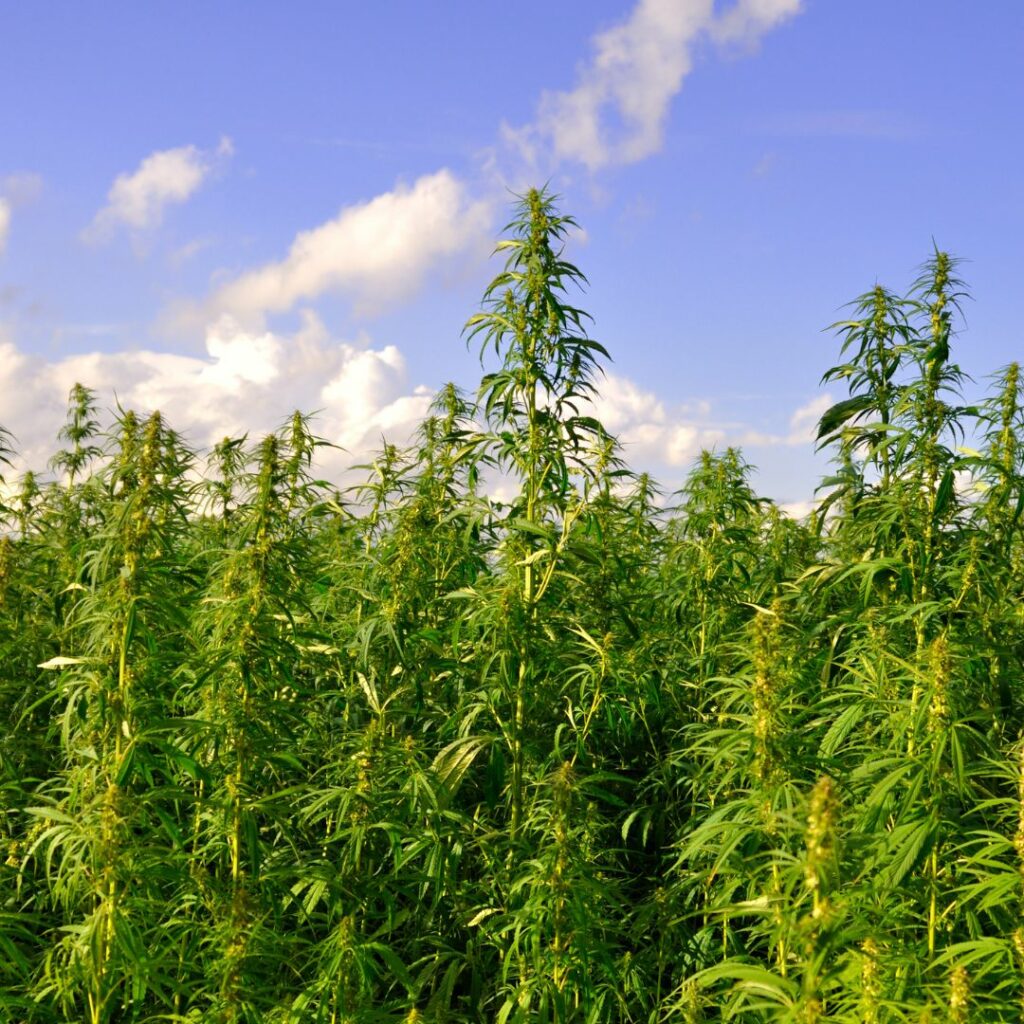In today’s world, where fashion is more than ever a reflection of our social and environmental values, it’s crucial to choose sustainable, eco-responsible materials. While the textile industry has long been synonymous with excessive consumption and environmental degradation, we are now at a crossroads. More than ever, we need to question the choice of materials and textile fibers we use for our clothes, and their impact on our ecosystems. In this article, we’ll explore the different options available to us and discover why linen stands out as the most eco-responsible choice for sustainable fashion.
The Carbon Footprint of Textile Fashion: A Major Ecological Challenge
Textile fashion is often criticized for its high carbon footprint. From manufacturing processes to transportation and distribution, every step in the supply chain contributes to the industry’s overall carbon footprint. According to a study published by Qantis, the fashion industry is responsible of 8% of global carbon emissions. Synthetic fibers, derived from petroleum, are among the most culpable in terms of greenhouse gas emissions. However, synthetic fibers are not necessarily the most polluting. In fact, cotton, despite being a natural fiber, emits more than polyester, around 16.3 kg of Co2 produced per kilo of cotton, whereas one kilo of polyester filament is estimated to emit 10.2 kg of Co2. It’s very difficult to estimate the precise emissions of each material, as a whole host of questions arise: Do we take transport into account, or should it be allocated to the transport industry’s Co2 emissions category?
Should we take into account the Co2 impact of finishing and dyeing, which is linked to the chemical industry, for example?
What is clear is that to avoid massive Co2 emissions, it is necessary to favor local processing and consumption of textile fibers. As for Safilin flax yarn, it offers the lowest carbon footprint today, as it is harvested, processed and spun in France or Poland.
The impact of water : a precious resource for sustainable fashion
In addition to carbon emissions, the textile industry is also demanding on water. Conventional cotton growing, for example, requires considerable quantities of water, with dramatic repercussions on freshwater reserves in many parts of the world. According to the Food and Agriculture Organization of the United Nations (FAO), cotton production requires an average of 10,000 liters of water to produce one kilogram of cotton, while flax production requires around 1,000 liters of water per kilogram. Beware of these figures, as the Bremen Cotton Exchange claims that cotton fibre is no longer a thirsty plant, and in fact requires “only” 1,214 liters of artificial irrigation water, a far cry from the 10,000 announced by the FAO. What is certain is that cotton requires more water than flax. If we add to this the water consumption required for the production of fertilizers and pesticides useful to cotton growing, the figure probably climbs even higher, but it is difficult to obtain clear data on this subject.
Moreover, according to the Ellen MacArthur Foundation’s “Pulse of the Fashion Industry” report, the textile industry is responsible for the consumption of 79 billion cubic meters of water every year, equivalent to around 32 million Olympic-sized swimming pools. The excessive use of water in the cultivation of certain fibers has led to genuine environmental disasters, such as the disappearance of the Aral Sea.
The textile industry is also dependent on water, as it is the main vector for removing impurities, applying dyes and finishes, and generating steam.
To preserve this precious resource, it’s best to opt for the sustainable linen fiber, which doesn’t require artificial irrigation.
Linen: an eco-responsible textile fiber
In this complex landscape, linen stands out as a truly sustainable option. Linen, derived from the flax plant and over 85% of European and French origin, is one of the oldest and most environmentally-friendly fibers. It requires far less water to grow than cotton, and doesn’t need pesticides or chemical fertilizers to thrive. According to a study by the Institut français du textile et de l’habillement (IFTH), linen production generates around five times fewer greenhouse gas emissions than polyester production. What’s more, flax is a short-cycle crop, generally requiring between 100 and 120 days of growth before being harvested. This means flax requires fewer resources and generates less waste than many other textile fibers, natural or otherwise.
What also makes flax an eco-friendly textile fiber is its ability to capture Co2. In fact, one hectare of flax retains 3.7 tonnes of Co2 every year. In addition, flax has particularly deep roots (+/- 1 meter), making it possible to work soils dedicated to agriculture, and encouraging underground activity.
Another durable aspect of flax is its resistance: due to the nature of its fiber, which is long, flax is particularly resistant, and as a result, flax products tend to last easily over time.
A look at natural alternatives and other eco-responsible, sustainable, low-carbon textile fibers.
While linen is undeniably a sustainable option, there are other materials that also deserve our attention in our quest for more eco-friendly fashion. Among them, merino wool, produced by merino sheep, stands out for its durability and insulating properties. Merino wool is naturally breathable, antibacterial and odor-resistant, making it a popular choice for outdoor clothing and thermal underwear. Furthermore, wool is fully biodegradable and renewable, making it an environmentally friendly choice.
Hemp is another natural fiber worth considering for sustainable fashion. The hemp plant grows quickly and doesn’t need pesticides or herbicides to thrive. It also requires little water to grow, making it a more than obvious choice in dry regions. Hemp fabric is durable, mildew-resistant and UV-resistant, making it an ideal choice for outerwear and accessories.
Tencel, also known as lyocell, is a fiber produced from wood pulp from sustainably managed forests. The Tencel manufacturing process is environmentally friendly, using a non-toxic, recyclable solvent to transform wood pulp into textile fiber. Tencel is soft, breathable and biodegradable, making it an attractive alternative to synthetic fibers.


Comparison with linen
Linen durability
Durability is a multidimensional concept. In the context of building materials, it refers to the ability of a material to maintain its quality and functionality over a long period, while minimizing its environmental impact. This includes aspects such as carbon footprint, resource use, recyclability and toxicity. Linen, merino wool, hemp and Tencel are all sustainable materials, but each has its own unique characteristics. Linen is renowned for its durability and resistance to wear and tear, making it a popular choice for household items. Merino wool is also highly durable and wrinkle-resistant, making it an ideal choice for outdoor clothing. Hemp is extremely durable and tear-resistant, but tends to wrinkle easily. Tencel is less durable than linen, but softer and silkier to the touch.
Performances :
In terms of performance, linen, merino wool, hemp and Tencel all have their own advantages. Linen is naturally breathable and absorbent, making it a comfortable choice for summer clothing. Merino wool is also breathable, warm and insulating, making it a versatile choice for all seasons. Hemp is durable and mildew-resistant, making it an ideal choice for outdoor clothing and household items. Tencel is soft and silky to the touch, making it comfortable to wear all day long.
The environmental impact of flax
In terms of environmental impact, linen, merino wool, hemp and Tencel all stand out from petroleum-derived synthetic fibers. Over 80% of flax is grown in Europe, much of it sustainably in Normandy, Seine et Marne and Hauts de France. It requires little water or pesticides, making it an environmentally-friendly choice. Merino wool is also a natural, renewable fiber, but requires more water resources for production. Hemp is environmentally friendly, requiring little water and no pesticides to thrive. Tencel is made from wood pulp from sustainably managed forests, making it an environmentally friendly option.
What fabrics should use for sustainable fashion?
In closing, the choice of material and textile fiber to use for sustainable fashion is crucial for the future of our planet. While linen stands out as a first choice for a natural fiber and the most eco-responsible due to its many environmental benefits, there are other sustainable options too, such as merino wool, hemp and Tencel. By opting for natural, renewable fibers, we can help reduce the ecological footprint of the textile industry and create a more sustainable future for generations to come.
